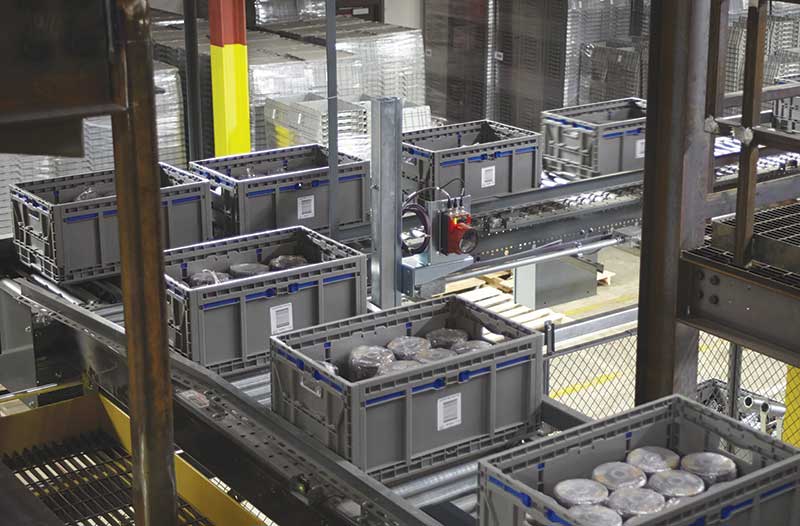Packaging Corner: Be open to change
Not every tote or container solution is off-the-shelf. That’s where a partnership can deliver out-sized results.
In the runup to Modex (Atlanta, March 11-14), time is scarce for marketing communications people at exhibitors. But that didn’t dissuade Samantha Goetz from making time for us. Even though her only option was to Zoom in from a UPS counter in a hotel lobby somewhere in San Antonio.
While the local color was novel, what Goetz had to say was even more notable. She’s director of marketing communications at ORBIS (Booth B2809), which will have on display an array of reusable totes, containers, pallets and more.
Now, practically everyone has bought off-the-shelf totes and containers more than once. They do the job, and a new color might even spark up the warehouse. But off-the-shelf is not always the answer. Just ask Goetz.
She talks about the story behind some programs being implemented that involve custom totes and containers developed by ORBIS, automated systems provided by integrators and you, the end user. She used the word “partnership” a lot. And while Goetz couldn’t identify end users due to confidentiality agreements, it was clear that the partnership process was common to all.
It all starts with face-to-face meetings at the end user’s facility. And typically involves two or three people from ORBIS, a couple from the integrator, and a range of people from the end user.
“Everyone approaches a solution from their perspective, but together we can structure this particular solution,” Goetz explains.
In a kickoff meeting, the group usually sketches out the rules of engagement and goals. The big buckets here are:
- Overall expected improvements (faster pick times, labor reduction and the like),
- Economic justification (payoff in so many months), and
- Environmental advances (solid waste and water reduction, recyclability and related others).
There’s also the matter of timeline for the partnership itself. Goetz says that’s typically more than 12 to 18 months. In other words, this partnership is not a trifling event, and should have an expiration date. That’s good.
By this point, Goetz says there’s clearly a level of transparency between all three partners. “A lack of transparency is the biggest obstacle to making any of these partnerships work. It’s all about trust between partners.”
Much of that trust comes from the expertise each brings to the table.
You have certain expectations and have set target operational metrics. Integrators know how their hardware works, even in unconventional ways. And ORBIS blends tote/container ROI, operational metrics and environmental factors.
“That total combination is a powerful force for getting the most out of any partnership,” says Goetz.
She also points out that combination typically far exceeds the resources of you or any other end user by yourself. And in many cases, it’s scalable. Meaning the first project can be a launching pad for future partnerships.
All of that said, Goetz also warns that there can be letdowns along the way.
Perhaps the most common is trusting in the number of steps needed to work through the ambitions of the project. In other words, it’s best for you not to discourage if there are more steps and iterations than originally expected. Or as Goetz, says, “be open to change.”
Come to think of it, that’s not a bad phrase to keep in mind for the success of any partnership.













